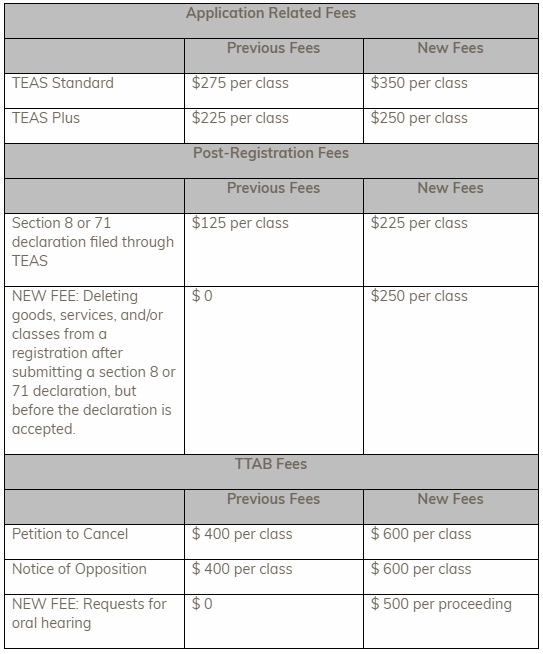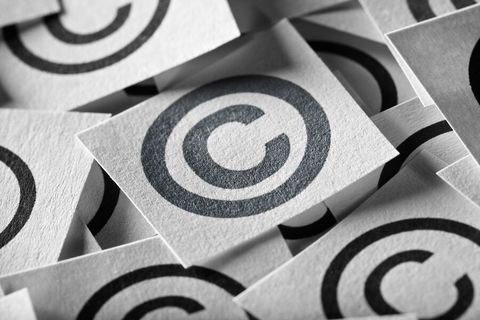Trademark Modernization Act of 2020 & 2021 USPTO Fee Changes
Client Alert | 14 min read | 01.28.21
The Trademark Modernization Act of 2020, signed into law on December 27, 2020, makes important changes to the Lanham Act including (1) making it easier for a trademark owner who proves infringement to obtain injunctive relief in litigation, and (2) establishing new procedures for challenging applications and registrations that may not meet United States Patent and Trademark Office (“USPTO”) requirements relating to use in commerce.
With respect to litigation and effective immediately, the Act clarifies that a trademark owner will enjoy a rebuttable presumption of irreparable harm upon a finding of trademark infringement, making it easier for the trademark owner to obtain injunctive relief. This resolves confusion as to whether irreparable harm can be presumed, which stemmed from the U.S. Supreme Court’s holding in eBay Inc. v. MercExchange, 547 U.S. 388 (2006). In eBay, the court held that a plaintiff who proves patent infringement must, in order to obtain permanent injunctive relief, satisfy a traditional four-factor test that includes demonstrating that it has suffered an irreparable injury. The Act now provides courts and litigants with clarity and makes clear that, if a trademark owner proves infringement, then irreparable harm caused by continued infringement will be presumed. The burden then shifts to the infringer to demonstrate the lack of irreparable harm.
In response to concerns regarding an increase in applications for and registrations of trademarks that are not actually in use in U.S. commerce, the Act provides new procedures for challenging applications and registrations. These changes will assist trademark users seeking to register their marks by providing additional methods to clear the register of unused “deadwood” marks.
Effective one year after enactment of the Act, any third party may submit evidence during the trademark application process for consideration by the USPTO, if the evidence is relevant to a ground for refusal of registration. Currently, third party objections are possible only through a Letter of Protest or after the application is published for opposition. See Trademark Manual of Examining Procedure §§ 1503, 1715.
Also effective one year after enactment of the Act, a third party may file a petition to the Director of the USPTO to (a) expunge a registration after three years of registration on the ground that the mark has never been used in commerce on or in connection with some or all of the goods or services specified in the registration, and/or (b) reexamine a registration any time, but no later than five years after registration, on the ground that the registrant was not using the mark on or in connection with some or all of the goods or services recited in the registration on or before the relevant date that the registrant alleged use of the mark. The USPTO may also initiate an expungement or reexamination proceeding on its own if the Director discovers information that sets forth a prima facie case.
Both expungement and reexamination require a petitioner to submit a verified statement that sets forth the elements of the “reasonable investigation” the petitioner conducted to determine non-use and contain estoppel language that bars subsequent challenges of a trademark with respect to the same goods and services once the registration has survived the same type of challenge, regardless of the identity of the petitioner.
USPTO Examining Attorneys will also have more flexibility in setting response times to office actions denying applications under the Act, which could result in overall faster processing times. While applicants have historically had six months to respond to office actions (15 U.S.C. § 1062(b)), once implementing regulations are issued, Examining Attorneys will be permitted to prescribe shorter response times that are not less than sixty days. The Act requires the USPTO to issue regulations providing for extensions of time to reply or amend aggregating six months and permits the USPTO to prescribe fees for extension requests.
The Act also requires the Comptroller General of the United States to conduct a study on the efforts of the USPTO Director to address “inaccurate and false claims of use in trademark applications and registrations” and to submit a report to Congress by December 27, 2023 on the results of such study of “decluttering initiatives,” including any recommendations for further changes to laws and regulations to improve the integrity of the trademark register and reduce inaccurate and false claims of use based on the results of the study.
Finally, and although not required by the Act, we note that the USPTO made routine updates to certain of its fees and added new fees effective January 2, 2021, including the following:

A link to the summary of new fees can be found here.
Contacts
Insights
Client Alert | 2 min read | 04.17.25
Will the Supreme Court review the Ninth Circuit’s unique Server Test for online copyright infringement? After the Ninth Circuit recently affirmed the Server Test, a photographer and copyright owner has requested certiorari. Petitioner-Plaintiff, Elliot McGucken, is a landscape photographer. Respondent-Defendant, Valnet, Inc., is the owner of a travel website located at “www.thetravel.com.” McGucken sued Valnet for copyright infringement when Valnet embedded on its site a number of links to McGucken’s Instagram posts. The district court, bound by the Ninth Circuit’s en banc decision in Perfect 10, granted Defendant’s motion to dismiss, finding that the Server Test foreclosed McGucken’s direct infringement claim as a matter of law, because Valnet linked to the images and did not store them on its own servers. The Ninth Circuit affirmed in a panel decision. McGucken now requests the Supreme Court to review the validity of the Server Test, which is unique to the Ninth Circuit.
Client Alert | 5 min read | 04.15.25
Is Section 230 Going to Change? The FTC, DOJ and FCC Signal Significant Change for Online Businesses
Client Alert | 4 min read | 04.14.25
Client Alert | 4 min read | 04.10.25
Hikma and Amici Curiae Ask Supreme Court to Revisit Induced Infringement by Generic “Skinny Labels”





